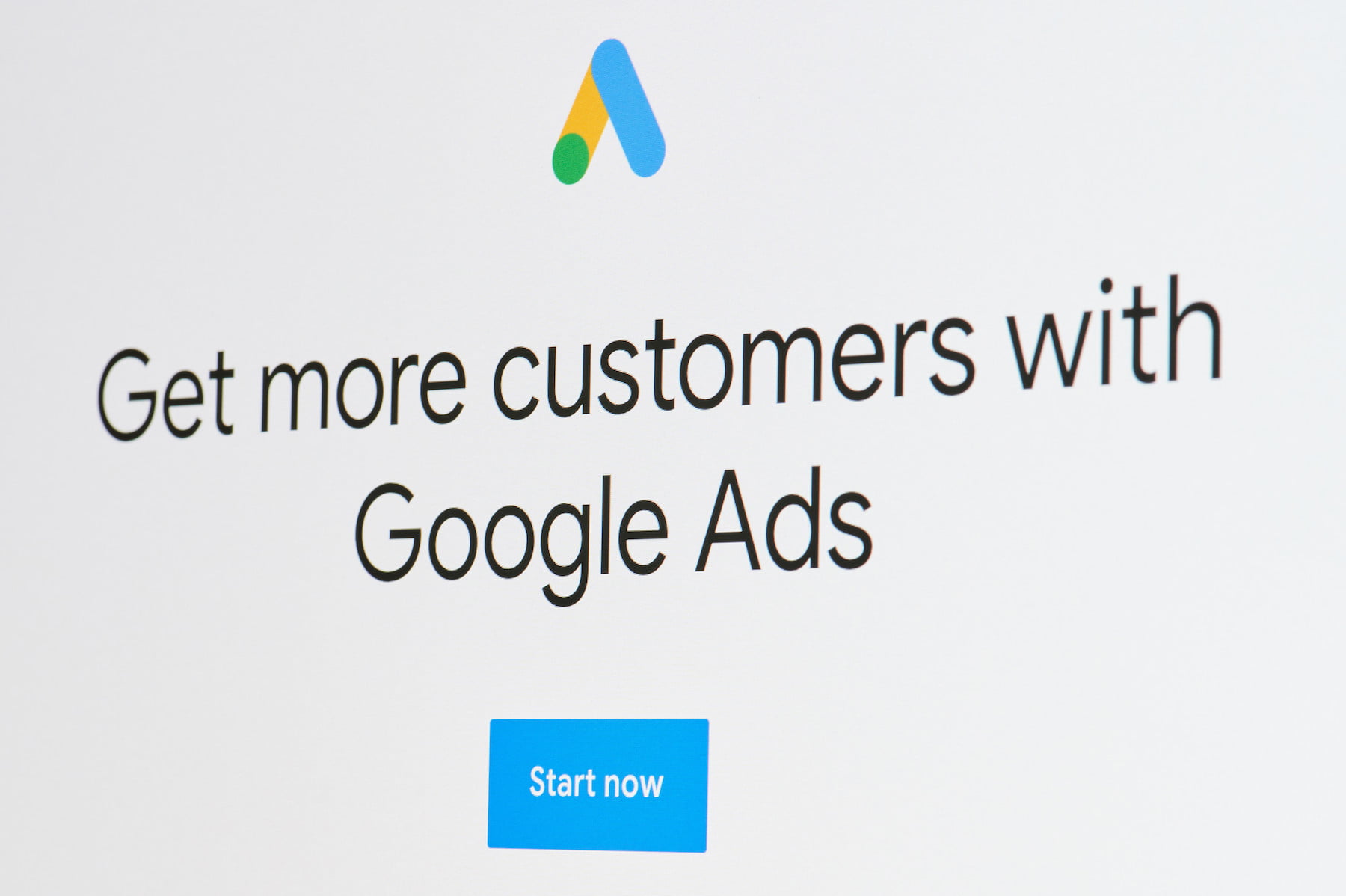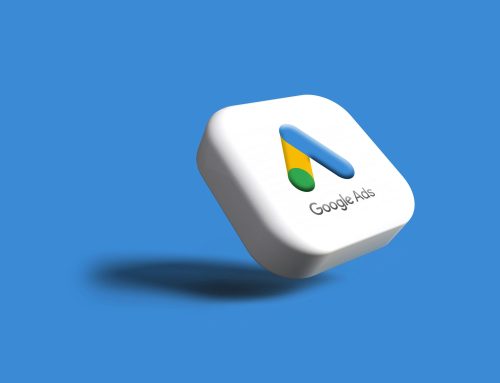As a small or medium business owner, you know how important it is to get your products or services in front of the right people. With so many advertising options available, it can be overwhelming to choose the right one for your business. One platform that should not be overlooked is Google Ads. In this blog post, we’ll be discussing 8 reasons why businesses should use Google Ads.
Google Ads, previously known as Google AdWords, is a pay-per-click advertising platform that allows businesses to place ads on Google’s search results and other websites across the internet. With over 2 billion monthly active users on Google, it’s no wonder why businesses of all sizes are turning to Google Ads as a way to reach new customers and grow their business.
From targeted advertising and measurable results, to cost-effectiveness and integration with other tools, we’ll show you how Google Ads can help your business achieve its goals. So, whether you’re a small business just starting out or a medium-sized business looking to take your online presence to the next level, keep reading to learn more about the benefits of Google Ads for your business.
Reason 1: Targeted Advertising
Targeting particular demographics, locations, and interests is one of the main benefits of using Google Ads. With targeted advertising, you can ensure that the individuals who are most likely to be interested in your products or services are the ones who see your ads. By doing this, you’ll be able to connect with the right individuals at the right moment, boosting the likelihood that they’ll click on your ads and ultimately make a purchase or complete the necessary activity.
For instance, if you own a neighbourhood coffee shop, you may use Google Ads to target individuals in your city who are searching for “coffee shop.” By doing this, you can increase the likelihood that people who are actively looking for a coffee shop in your neighbourhood will see your ads. To ensure your ads are being seen by the people who are most likely to be interested in your products or services, you may also target specific demographics, such as age and gender.
But targeting also saves you money by preventing you from spending it by not showing your ads to people who aren’t interested in your products or services. By targeting the right audience, you can make the most of your ad budget and get the best possible return on investment (ROI).
Tips for businesses on how to effectively target their audience through Google Ads:
- Use Google Analytics data to understand who your current customers are and target similar audience
- Use location targeting to reach customers in specific geographic areas
- Use keyword targeting to reach people who are actively searching for products or services like yours
- Use demographic targeting to reach specific age groups, genders, and interests.
Reason 2: Measurable Results
The opportunity to monitor and assess the effectiveness of your ads in real-time is just another fantastic perk of using Google Ads. Businesses may get precise information and analytics on their ad campaigns from Google Ads, including the click-through rate (CTR), conversion rate, and cost per conversion. Businesses can use this information to determine which ads are effective and which ones need to be adjusted or optimized.
For instance, if you see that your ad’s CTR is poor, you can adjust the copy or the targeting to boost its effectiveness. On the other hand, if your advertisement has a good conversion rate, you can increase the budget allocated to it in order to expand your audience and boost sales. You may make data-driven decisions that will enhance the effectiveness of your ad campaigns and eventually boost your ROI by examining the Google Ads data.
You can measure user activity and conversions on your website thanks to the connection of Google Analytics and Google Ads, which gives you a more comprehensive understanding of your customers’ journeys. This is especially helpful for e-commerce companies since you can monitor consumer behavior and conversion rates on various website pages, such product pages and checkout pages, and adjust your advertising accordingly.
Guidelines for companies on how to efficiently collect and evaluate their Google Ads data include:
- Track important data like CTR, conversion rate, and cost per conversion with the Google Ads dashboard.
- Track conversions on your website with Google Ads conversion tracking.
- Track user activity and conversion rates on various pages of your website with Google Analytics.
- Watch indicators like the bounce rate, the average time spent on the site, and the number of pages each session.
Reason 3: Cost-Effective
One of the major benefits of using Google Ads is that it’s an affordable option to attract new clients and increase revenue. Pay-per-click (PPC) advertising, which is what businesses do with Google Ads, only charges them when a user clicks on their advertisement. This indicates that you only pay for actual clicks on your advertisement and not for ad space or impressions. As a result, it is a cost-effective choice for companies of all sizes because you only pay for website traffic that really arrives.
Additionally, Google Ads gives you the freedom to set a budget for your advertising campaigns and to modify it as necessary. As a result, you can start modest and gradually raise your budget as you start to see the effects of your advertising initiatives.
Google Ads may be a more affordable alternative to other advertising mediums like television or print ads. A 30-second ad during a famous TV show, for instance, can run up to tens of thousands of dollars, but a Google Ad campaign can be launched with as little as a few hundred dollars and changed as necessary.
Tips for businesses on how to manage their Google Ads budget:
- Set a budget for your ad campaigns and adjust as needed
- Use keyword research to find the most relevant and cost-effective keywords for your business
- Use bid adjustments to optimize your ad spend
- Use conversion tracking to measure the ROI of your campaigns
Reason 4: Increase Brand Awareness
A great method for raising brand awareness for your company is Google Ads. Your business will have a better visibility and be more likely to be spotted by potential clients if you place ads on Google’s search results and other websites all over the internet. The enhanced brand knowledge and recognition that might result from this greater visibility can ultimately result in more sales and revenue for your company.
For instance, if you own a small clothes store, you may utilize Google Ads to run advertisements on websites where your target market frequently visits. Having your advertisement appear on these websites will increase the likelihood that potential clients will see your brand and visit your website or business. Furthermore, by focusing on specific demographics and interests, you can make sure that your advertising are seen by the individuals who are most likely to be interested in your goods or services, hence boosting the likelihood that they will end up as clients.
In addition, Google Ads also allows you to run remarketing campaigns, which allows you to target people who have previously visited your website. By showing them ads related to their interests, you can increase brand recall, and encourage them to come back to your website and make a purchase.
Tips for businesses on how to effectively use Google Ads to increase their brand awareness:
- Use display ads to place your brand and products in front of a wide audience
- Use remarketing campaigns to target people who have previously visited your website
- Use location targeting to reach customers in specific geographic areas
- Use demographic targeting to reach specific age groups, genders, and interests.
Reason 5: Reach the Right Audience
Reaching the correct audience at the right moment is among the major advantages of using Google Ads. You may ensure that your advertisements are seen by the people who are most likely to be interested in your products or services by targeting specific demographics, localities, and hobbies. Being able to only reach those who are most likely to become customers implies that your advertising spend is being used properly.
For instance, if you’re a dentist, you may use Google Ads to target individuals in your city who are looking for “dentist.” By doing this, you may increase the likelihood that people will call your office by ensuring that your advertisement only appears to those who are actively looking for a dentist in your region. Remarketing campaigns can also be used to target customers who have already interacted with your business or visited your website. By contacting those who have already expressed interest in your products or services, you increase the likelihood that they will end up as clients.
Reaching the correct audience will also improve your conversion rate, which will ultimately result in more sales for your company. You can also track and evaluate the effectiveness of your advertising with Google Ads, enabling you to see which ads are working well and which ones require tweaking or optimization.
Tips for businesses on how to effectively use Google Ads to reach their target audience:
- Use keyword targeting to reach people who are actively searching for products or services like yours
- Use location targeting to reach customers in specific geographic areas
- Use demographic targeting to reach specific age groups, genders, and interests
- Use remarketing campaigns to target people who have previously visited your website or engaged with your business.
Reason 6: Flexibility
Google Ads gives companies a huge selection of ad formats and targeting choices, giving them a lot of freedom to design unique ad campaigns that cater to their particular requirements. Owing of this versatility, businesses may test out various targeting and ad styles to find what works best for them.
For instance, companies have a range of ad styles to select from, including text ads, display ads, shopping ads, and video commercials. This enables companies to select the format that best suits their products or services and intended market. Additionally, in order to reach the correct audience, firms can employ a variety of targeting strategies like keyword targeting, location targeting, and demographic targeting.
Due of this adaptability, firms can alter their advertising efforts in real time based on performance information. Businesses can alter the ad wording, targeting, or bid, for instance, if an ad isn’t doing well, in order to increase performance. This enables companies to maximize the ROI from their advertising operations.
Tips for businesses on how to take advantage of the flexibility offered by Google Ads:
- Experiment with different ad formats to see what works best for your business
- Use targeting options to reach the right audience
- Use bid adjustments to optimize your ad spend
- Make changes to your ad campaigns in real-time, based on performance data.
Reason 7: Integration with other tools
Other tools like Google Analytics, Google Business Profile, and Google Search Console can be connected with Google Ads to give businesses a more complete picture of their online presence and to help them optimize the effectiveness of their ad campaigns.
A good example is the ability for companies to measure user behavior and conversions on their website by connecting Google Analytics with Google Ads. This can offer insightful information about how visitors utilize a company’s website, including which pages they visit and how long they spend on each page. The user experience on the website can be enhanced and advertising campaigns can be optimized using this data.
Businesses can share their location and company details with prospective clients by integrating Google Business Profile with Google Ads, such as business hours and contact information. This can increase the likelihood that customers will visit a company’ physical location and can raise the visibility of a business in local search results.
Businesses can track the success of their websites on Google’s search engine and keep track of clicks, impressions, and visibility through the integration of Google Search Console. By doing so, businesses may better understand how their website is doing in search results and spot any technical problems that might be affecting its exposure.
Tips for businesses on how to effectively integrate Google Ads with other tools:
- Use Google Analytics to track user behavior and conversion rates on your website
- Use Google Business Profile to share your location and business information with potential customers
- Use Google Search Console to track your website’s performance on Google search engine
- Use all the data collected to optimize your ad campaigns and improve the user experience on your website.
Reason 8: Local Advertising
With the help of Google Ads, local businesses may effectively target clients in particular regions. This is especially helpful for companies having physical locations, such eateries, shops, and service providers. Businesses can enhance the likelihood that customers would visit their physical location and eventually generate more revenue by marketing to clients in a particular area.
You can use Google Ads, for instance, to target people looking for “restaurants” in your city if you own a local restaurant. The likelihood that someone will visit your establishment is increased because your advertisement will only be displayed to those who are actively looking for a restaurant in your neighborhood. To make sure that your advertisements are seen by individuals who are in a given area around your company, you can also employ location-based keywords and targeting options.
Utilizing Google Ads, businesses may create location-based extensions that allow viewers to click on an ad to view the advertiser’s physical location and receive driving directions. As a result, it may be simpler for customers to identify a company, increasing the possibility that they will go to the actual location.
Tips for businesses on how to effectively use Google Ads for local advertising:
- Use location targeting to reach customers in specific geographic areas
- Use location-based keywords to target people searching for businesses in your area
- Create location-based extensions to make it easier for customers to find your business
- Use Google Business Profile to share your location and business information with potential customers
Summary
In conclusion, Google Ads is a powerful tool for small and medium businesses to reach new customers and drive sales. With its targeted advertising, measurable results, cost-effectiveness, increase in brand awareness, reaching the right audience, flexibility, integration with other tools and local advertising capabilities, businesses can make the most of their ad budget and get the best possible return on investment (ROI).
Businesses may make data-driven decisions that will enhance the performance of their advertising campaigns thanks to the rich data and analytics that Google Ads offers them on their ad campaigns. Businesses can watch user activity and conversions on their website thanks to the connection of Google Analytics and Google Ads, which gives them a more comprehensive understanding of the customer journey. Additionally, Google Ads’ adaptability enables companies to test various ad formats and targeting options to determine which ones are most effective for their particular industry.
Businesses may boost their visibility, reach new clients, and ultimately increase sales and revenue by utilizing the advantages and capabilities of Google Ads. It can be an effective tool for companies to expand their operations with the appropriate strategy and targeting.





